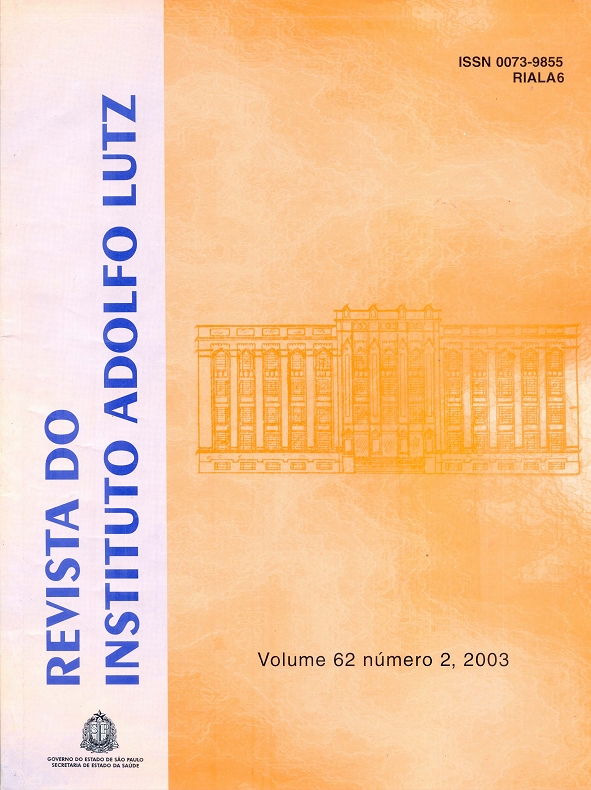Resumo
Meningococcal disease poses a serious public health problem, due to their characteristics of being highly epidemic, with a high mortality rate. This fact led many research centers to turn their efforts to the development of a vaccine against Neisseria meningitidis serogroup B. The vaccines available at the present
time are directed to serogroups A, C, Y and W135. In order to obtain a safe vaccine, many of the antigens of the outer membrane of the bacteria are being studied. Among the components being studied for eventual use in a vaccine against N. meningitidis B are the lipopolysaccharides (LPS). Lipopolysaccharides are complex macromolecules lipoprotein which integrate the outer membrane of gram-negative bacteria. It is interesting that many of the studies involving these molecules have shown adjuvant characteristics in the immune
response against N. meningitidis B. However, there is a problem with these molecules, due to the toxic effects of the lipid A present in their structure. The present study had the aim of evaluating the specificity and protective activity of the antibodies induced in an animal model by the outer membrane complex
(OMC) obtained from strains of N. meningitidis B:4:P1.15. The strains used for immunization of mice were selected through colony-blot, using anti L3,7,9 and L8 monoclonal antibodies, for the highest and the lowest expression of the LPS of immunotypes L3,7,9 and L8. First we selected the strains using colony blots, then we performed the extraction of the OMC of the bacteria belonging to the selected strains (B:4:P1:15 L3, 7,
9Æ, B:4:P1.15 L3, 7, 9â, B:4:P1:15 L8Æ and B:4:P1:15 L8â) followed by, the intranasal (IN) and intramuscular (IM) immunization of the BALB/c mice with the purified OMC. The present study analyzed the reactivity of the antibodies (IgM, IgG and IgA) found in the serum and in the saliva of mice who were immunized IN or IM, as well as the presence in the serum of antibodies with bactericidal activity. In the serum of the IN immunized mice, antibodies found four months and one year after immunization and with cross-reactivity against a wholecell suspension of heterologous strains of N. meningitidis bacteria (B:4:P1.9, B:4:NT, B:14:NT and C:2a:P1.2) were also tested. The analysis of the presence of antibodies in the serum (obtained 30 after immunization) and in the saliva showed reactivity against both the whole-cell bacteria and the OMC of
the strains selected. In study of antibodies found four months and one year after the immunization against the strains B:4:P1.9, B:4:NT, B:14:NT and C2a:P1.2 only the reactivity against the whole-cell suspension of the bacteria were analyzed. The results of the ELISA test shows that IM immunized mice produced higher levels of antibodies of the IgG isotype and the IN immunized ones produced higher levels of antibodies of the
IgG and IgA isotypes, specific against whole-cells of homologous and heterologous strains of N. meningitidis. The analysis of specificity through the Immunoblotting of the antibodies found in the serum of the IM and IN immunized mice revealed that the response was directed mainly against the proteins of classes 1, 2 and 5, and also against proteins 50, 65 and 70 kDa of the whole-cell suspension bacteria and the OMC of strains B:4:P1:15 L3, 7, 9Æ, B:4:P1:15 L3, 7, 9â, B:4:P1.15 L8Æand B:4:P1:15 L8â. The specificity of antibodies of isotypes IgG and IgA (obtained from the serum of intranasally immunized mice) against strains B:4:P1.9, B:14NT, B:4:NT and C.2a.P1.2 revealed that the response was directed mainly against proteins of molecular weight higher than 50 kDa. In the saliva of IN immunized mice the reaction of antibodies of the IgA isotype
was also observed by ELISA and Immunoblotting. The response was directed against proteins of 28 kDa, 33 kDa and higher than 50 kDa. When the antigen preparations obtained from the strains with the highest and lowest expressions of immunotypes L3,7,9 and L8 were compared, no significant differences were found
by ELISA. Immunoblotting analysis, however, showed differences in the specificity of the response, particularly for peptides of high molecular mass. The titers obtained by the assay of bactericidal assay were higher for the mice IN immunized with strains selected for LPS L3, 7, 9 and L8. The results of antibodie’s specificity indicate that the selection of LPS may be important to elicit systemic as well as local muccosal
effective immune response, when used in an intranasal vaccine preparation. This work indicates the importance of selecting LPS immunotypes in order to obtain a meningococcal vaccine capable of inducing a lasting immunity in people of all ages, in both the muccosal and the systemic modes of admission.

Este trabalho está licenciado sob uma licença Creative Commons Attribution 4.0 International License.
Copyright (c) 2003 L. M. C. C. Coutinho
